The Cavia Porcellus, better known as the guinea pig, is a rodent from South America that has won the human heart for hundreds of years. If you know guinea pigs have your love, you may want to learn more about these furry, social animals.
Guinea pig owners can find themselves fascinated with every aspect of their cute little critter. One of the most exciting features is its eyes.
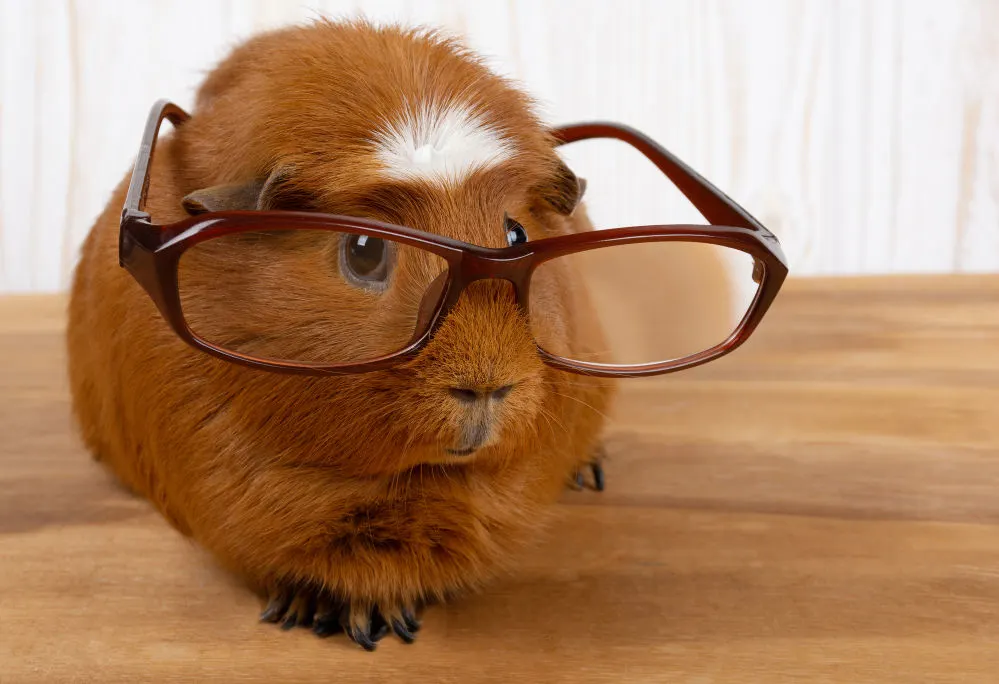
Have you seen your pet guinea pigs watch your phone? Do they move around their big cages during the nighttime? Can they see what you don’t?
There are so many questions you can ask and there’s much to learn about the guinea pig eye and what they can see. Here is the perfect place to get knowledgeable. So, keep reading to get to know more about how do guinea pigs see.
Guinea pig vision: an overview
The one question many people have is simple: do domesticated guinea pigs have good or bad vision and how well can guinea pigs see? That depends on the criteria you are judging their sight on.
These little critters are considered to have poor eyesight, but they perform differently in different areas of vision. In some areas, they have better vision capabilities than human eyes, but their performance is dismal in other areas.
Here are some aspects of your guinea pig’s vision.
Near 360-degree vision
These small animals have a better range of sight than humans and many other mammals. This is due to the position of their eyes.
Your cavies’ eyes are on the side of their head, not facing the front, as predators’ eyes often do. Their eyes are positioned high enough for a wide range of vision.
Guinea pigs can see ahead, beside, and behind themselves. Their vision is only impaired when they try to see forward because of the position of their nose as it blocks their field of sight.
As prey animals, they have a visual range of nearly 360 degrees, despite this one blind spot. This allows them to be on the lookout for danger more effectively.
Poor depth perception
Both wild guinea pigs and domesticated guinea pigs have poor depth perception. This can be a handicap, despite the visual range advantage.
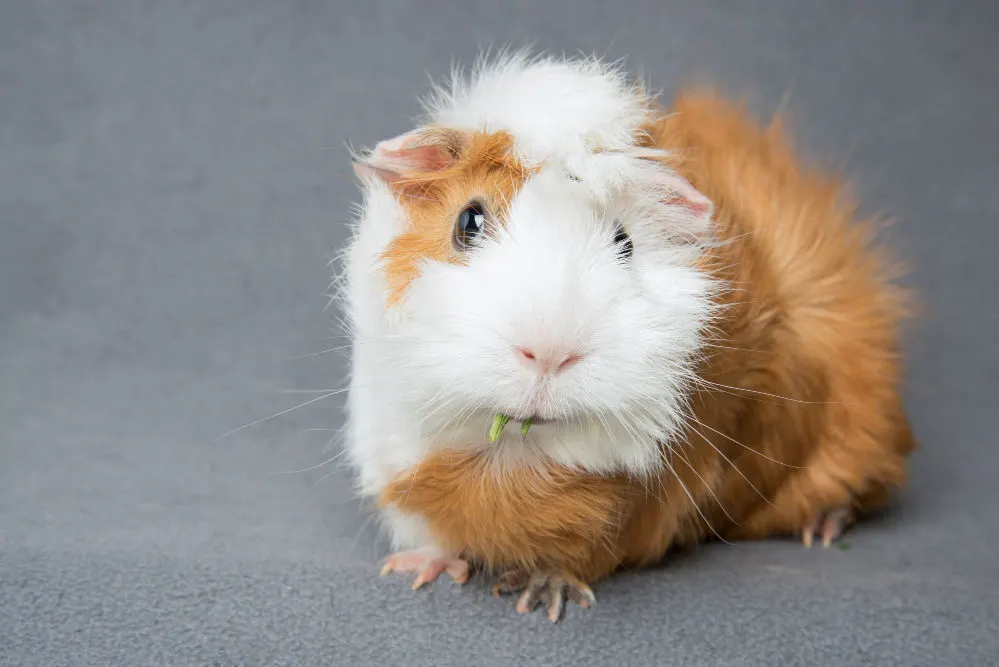
They make up for this by using their other senses. Your furry friends also have vibrissae, or whiskers, to help them. These are hairs found on their muzzles.
The whiskers are sensitive to their surroundings and help the critter navigate the world better, even without fantastic depth perception. They also have a great sense of smell, which guides them to food and other necessities.
But their lacking depth perception can allow them to easily fall. Responsible pet owners must remember not to elevate their cages; a fall from any height can result in an injury.
Dichromatic color vision
These little creatures have color vision. The color range of this vision is, however, limited. A study shows that they cannot differentiate between blue and green light.
People with normal vision have trichromacy. Having dichromatic vision, or dichromacy, is a type of color blindness. This means that only two out of the three cone cells in your eyes work.
The result is that you can’t perceive a certain section of the light spectrum and therefore different colors within that spectrum. This is the limited eyesight that your furry friend has as it lacks that extra cone. So yes, while guinea pigs see color, they have color blindness, as do many animals, and can only distinguish between some colors, not all of them.
Its dichromacy does still help it see the world better, even if it’s restricted. It aids domestic guinea pigs in navigating their cages.
Night vision
You may have heard rustling around in your pet’s cage in the middle of the night. Guinea pigs can be active at night, so does this mean they have night vision?
Not so much.
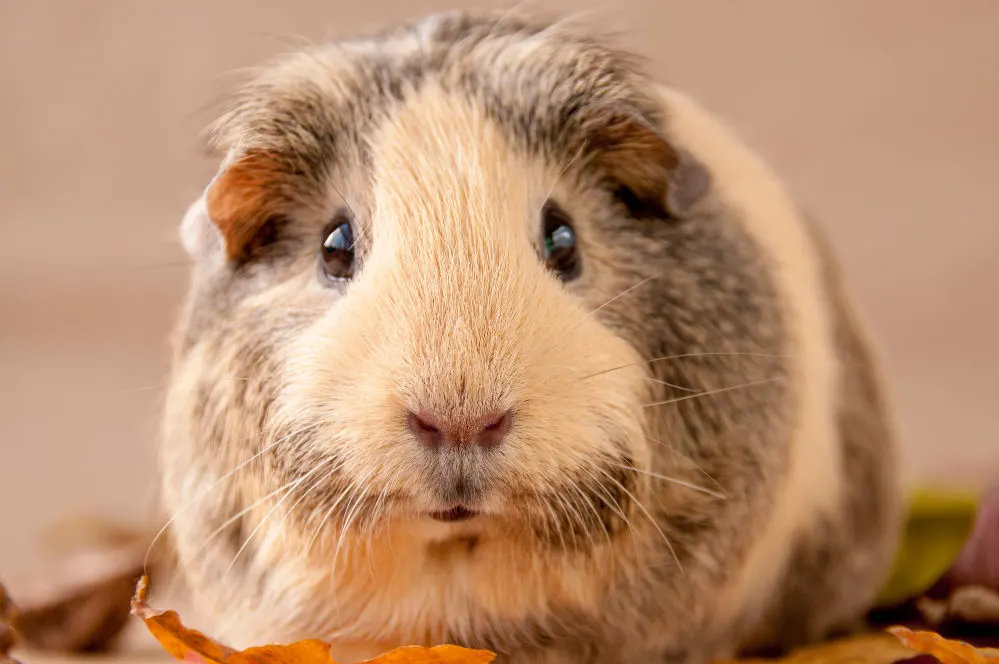
Guinea pigs are crepuscular animals. This means that they are most active at dusk. They don’t, however, sleep all night.
These small animals sleep in short bursts throughout the day and only need four to six hours of sleep daily. Guinea pigs sleep for a few minutes at a time throughout the day. This results in them still being active at night.
The way that they navigate at night is by using different senses. Their vibrissae come in handy to feel around in any dark environment. Their spatial awareness as well as an excellent memory mean that they know their way around a familiar space without relying too much on their sight.
Guinea pig’s eyes and potential problems
A guinea pig’s eyes almost always remain open. Their eyes can even stay open while they sleep, so they can stay aware of their surroundings for protective purposes.
They do close their eyes though if they feel very safe in their environment. You have done an excellent job protecting your furry friend if you catch them napping with their eyes closed.
The eyes of guinea pigs can say a lot about the animal’s health. A normal eye for full-sized adult guinea pigs slightly protrudes from their face, is clear, and reflects red when you shine a light into it.
But abnormalities can appear in the eye, either on both eyes or just one. When just one eye is abnormal, it is probably the result of an injury. An abnormality in both eyes is probably the result of an infection.
There are different types of injuries and infections that a cavy can get. They can result in the eye protruding more, sinking in, being bloodshot, or cloudy, and can even lead to blindness if not treated in time.
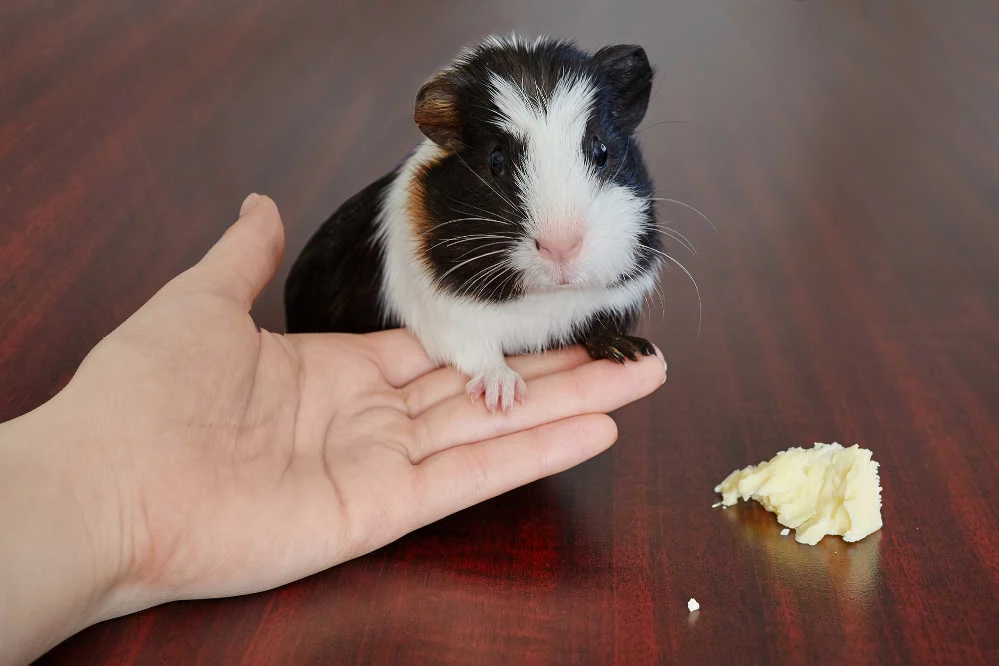
Be sure to pay close attention to your pet’s eyes. They can tell you a lot. Contact a vet if you see anything amiss. Here are some injuries, infections, and conditions that can negatively impact a guinea pig’s sight.
Corneal ulcer
Your little critter can get a corneal ulcer. This is an injury to the cornea of the eye. You can see this in a few different ways. The injury can be caused by a scratch, an infection, or something foreign being stuck in the eye, among other things. This includes even a small piece of hay lodged into the eye.
An ulcer of this nature can result in a cloudy eye. The eye can also become more red and inflamed. A vet would likely treat an ulcer caused by a foreign body by numbing the eye. They would then remove the object and give the guinea pig something to relieve pain, and eye drops if necessary.
If you see something stuck in your guinea pig’s eye, do not attempt to remove it yourself. This can lead to further injury. Make an appointment to see a vet instead, who can properly remove the object.
Cataracts
A cataract is a condition where the lens of the eye becomes cloudy. This clouding leads to impaired vision.
It usually comes as a result of age. Other causes are diseases such as diabetes mellitus. Genes are also responsible, because cataracts can be inherited. Some species of guinea pigs are more prone to having cataracts at a younger age, though.
Conjunctivitis
Conjunctivitis is the inflammation of the lining of the eye called the conjunctiva. This pink lining will look redder than usual. There might also be a discharge coming from the eye.
This has different causes. It can be because of an infection, an irritant in the eye, or an allergic reaction. A vet may prescribe an ointment or eye drops to be administered.
Entropion
Entropion is a condition where the eyelids have turned inwards. This results in the eyelashes rubbing against the eye and causing irritation. The eyes can develop a milky film and a corneal ulcer as a result.
Newborn pups usually experience this medical condition. Some breeds experience it. Luckily, the pups typically outgrow it within a few weeks. A vet would prescribe a sterile eye lubricant to apply several times a day as a treatment for the condition.
Blindness
Several things can cause blindness in a cavy. Some are born blind, but it can develop over time or result from injury. There are also genetic defects and tendencies that can lead to blindness.
When a light is shone into a blind guinea pig’s eyes, they do not reflect red but white instead. This does not mean that the cavy is entirely handicapped, though.
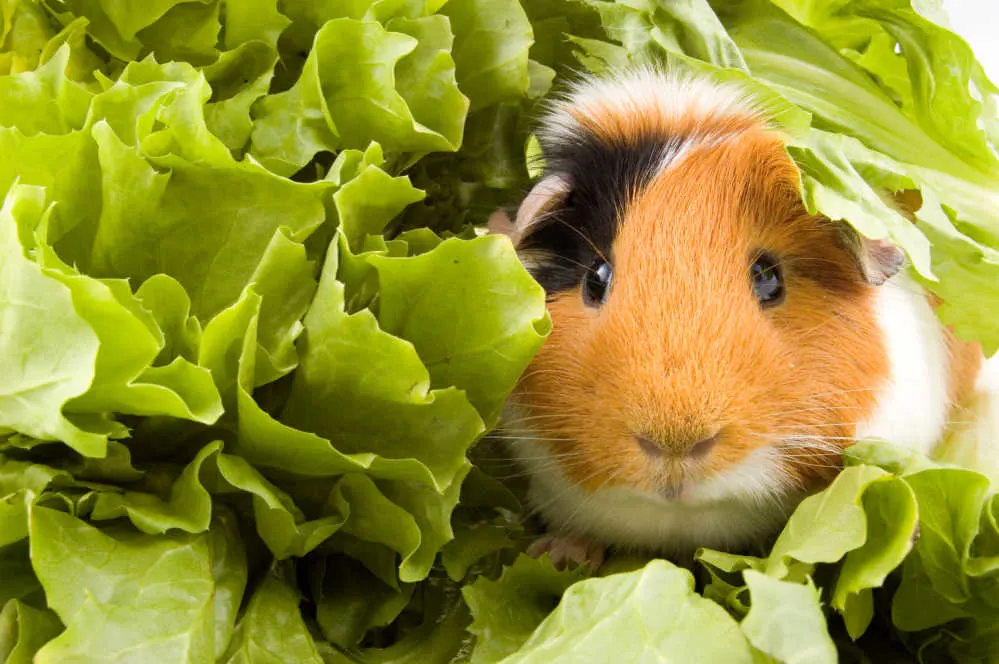
Guinea pigs rely on much more than their sense of sight. They have an acute sense of smell and sensitive hearing. This, along with their vibrissae, helps them navigate the world just fine, even if they are blind.
You can help your blind pet out by setting up their cage in a specific way so they can move about easily in it. Their spatial awareness will make it possible for them to memorize the layout.
They will be more comfortable when they know their environment well, so don’t move things around too much. The little critters will figure out where their fruits and vegetables, water, and hay are by scent.
The final takeaway
Guinea pigs have an interesting sense of sight that, despite being poor, can still do them justice in their world.
Fortunately, their other senses partner with their vision to make sure that they navigate the world around them well. Now that you know more about it, make sure to care for your furry friend’s sight.
Steph Dyson is a travel journalist by trade but a lover of all small pets. She’s been a pet mum to everything from gerbils to guinea pigs, rabbits to hamsters, and fish to dogs of all shapes and sizes. She wants to share her years of experience with small pets and make Small Pet Guides the go-to website for pet owners seeking information and care advice.

